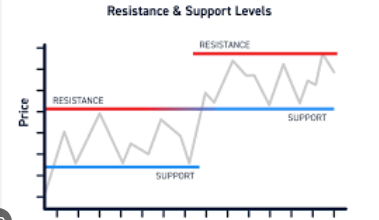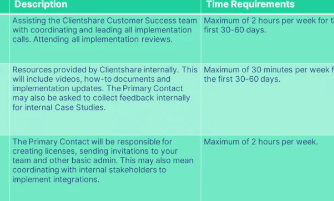Novel method for better data consolidation: fragmentation to concentration

Data fragmentation shapes the modern businesses. Companies compile data from sales tools, marketing systems, CRMs, outside providers. Teams cannot see leads; duplicate records cause ambiguity; and putting this data in silos causes major missed insight. From this follows lost opportunities, poor performance, and wasted effort.
Data consolidation aggregates several data points under one readily accessible source. New methods of data consolidation enhance, match, and organize data for optimal use in decision-making. Modern data gathering technologies help businesses to concentrate, coordinate, and communicate with leads.
Fragments show less performance.
Data kept on incompatible systems creates many issues:
Usually scattered across many sites, prospects’ recent interactions and interests provide an inconsistent picture in incomplete lead profiles. Many approaches generating the same lead might waste money and annoy prospects. Working in silos without exchanging data, sales and marketing divisions produce mismatched tactics and lost opportunities. Manual data management results in teams losing output, hand-crossing lists, and increasing mistakes and time lost. These issues reveal the requirement of companies depending only on one source of truth.
The advantages of consistent data aggregation
Every department may become targeted, effective, and interconnected with good data aggregation. There are advantages in:
Consolidated data guarantees team members the whole lead engagement history and removes blind regions, therefore presenting a correct picture of leads.
Once duplicate entries and centralizing data are eliminated from the picture, teams could better use leads with focused and relevant outreach.
Simplified trend and pattern analysis guides businesses in making consistent choices based on facts.
The databases of sales and marketing support basic departmental hand-off development and collaboration.
Consolidation helps your data architecture to be led free from clutter, competent of managing more volumes, and ready for development.
Different data consolidation techniques dependent on integration platform, data center
Starting consolidation calls for data from several systems moved to a data warehouse or CRM. Microsoft Power; Zapier, Make; automatically flows data across systems to keep real time systems intact.
Advanced integration systems like Snowflake or MuleSoft can connect massive amounts without data loss for larger businesses.
Stack very important leads
List stacking permits layers of a complex consolidation method to find overlapping prospects. Priority is given multi-dataset leads including webinar participation that also takes use of email marketing.
This overlap shows purchase intent and helps sales teams prioritize prospects. Customized lists with well defined goals allow businesses to stack this data such that lead engagement and conversion rise.
Minimizing data and controlling duplication
Double data affects conues and lead score accuracy as well. By grouping similar data based on common traits, Ringlead, Clearbit, and OpenRefine sophisticated deduplication technologies help to keep your system clean.
Data enrichment enhances profiles going beyond deduplication. Through automated job title and industry data completion, ZoomInfo and Clearbit provide sales teams additional information for tailored outreach.
Chart it and standardize the data.
When combining data from several sources, fields may be labeled differently; one system could use “First Name,” another “Given Name.” Data mapping addresses fields alignment.
Talend and Informatica let companies have uniform data structures and categorizing systems across platforms. This ensures perfect uniformity and facilitates natural flow of data, hence lowering mistakes.
Information included in a data warehouse or CRM
Right now, the firm only has one lead source—one CRM system. Big companies could retain all collected data in an Amazon Redshift data warehouse, Snowflake, Big Query data warehouse.
Data-oriented teams could help to avoid fragmentation and enable real-time changes. This guarantees that every department takes use of the same set, therefore promoting unity of action.
Real-time alerts, automated processes
Once data is gathered, businesses might react on significant signals using real-time alarms and automated systems. In a case study, consider:
Sales instructions call for follow-up should a lead who downloaded an ebook out of the blue visit the price page.
When a lead hits a certain engagement level, automated email sequences provide speedy contact free from human involvement.
Real-time systems track all possibilities, so teams start to be flexible and adaptive.
Typical Data Consolidation Problems: Management Style First in relevance is management of data floods. Sort leads using a demographic based method, initially giving CRM segmentation and filtering top priority. This helps teams focused on key areas free from data overload to concentrate on them.
technique of handling The second difficulty is organizing contradictory information. Search for demand missing or contradictory statistics. Provide instructions to guarantee newly acquired goods satisfies criteria of quality.
Third problem is team change resistance; the answers come from data consolidation for sales and marketing. Show how new tool training aids in data simplification, thereby boosting efficiency and output.
Companies have to gather information if they are to survive in the erratic surroundings of today. While data fragmentation creates uncertainty and inefficiency, unified data promotes attention, alignment, and productivity.
Among the modern consolidation methods, real-time systems, deduplication, and list stacking might enable businesses to establish one lead management single source of truth. Faster follow-up, more conversions come out from this better focusing.
After fragmentation, businesses might concentrate such that every piece of data supports better choices and outcomes using appropriate tools and procedures. Simplify your data immediately; homogeneous, orderly, and ready for development is the future of lead management.






